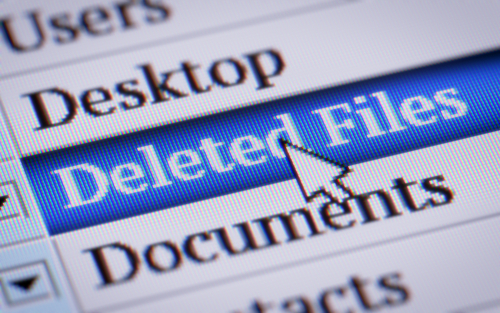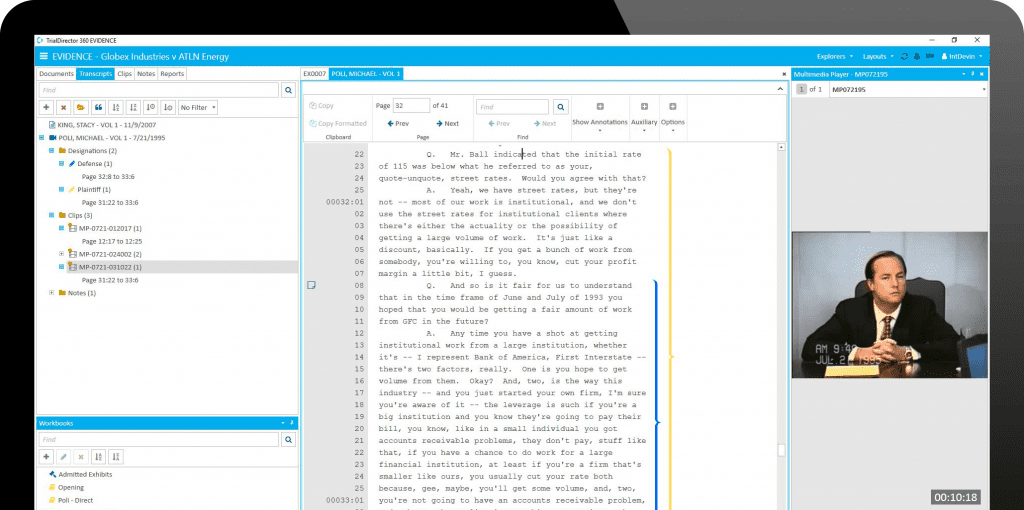More and more, eDiscovery plays a larger role in criminal investigations. These two recent murder cases have again highlighted the use of electronic forensics to solve cases that only a few decades ago, would have been difficult to crack in the relatively short time frame between the crime and the arrest.
The Sydney Loofe Case
In the second week of his trial this June, murder suspect Aubrey Trail tried to cut his own throat in the courtroom. A year ago, the then 51-year-old Trail and his alleged girlfriend 24-year-old Bailey Boswell, were charged with the murder of a 24-year-old Nebraska woman, Sydney Loofe.
Loofe was last seen 11/15/2018 before going on a Tinder date with Boswell. Police found the remains of Loofe’s body in a field a few weeks later, and in the months that followed, used a wide variety of electronic data, along with traditional forensics, to link Trail and Boswell to the murder. From an eDiscovery point of view, the list of evidence pieces together a vivid story:
- Tinder Profiles: 140 messages between Loofe and Boswell in the days before November 15th were pulled from their online dating profiles. The last was on Nov. 15 at 6:54 p.m., when Boswell said she’d arrived at Loofe’s apartment. Police also found that Boswell went by “Audrey” on her online-dating profile.
- Snapchat Photo: Loofe sent a selfie to a friend via Snapchat on November 15th with the caption, “Ready for my date.”
- Facebook Videos: Trail and Boswell both posted Facebook videos claiming innocence while police were looking for them. In one, Boswell said she was “Audrey on Tinder and a few other names because I have warrants.”
- iPhone Reset: After her arrest, Boswell gave investigators permission to search her iPhone 7, which they found had been reset to factory default settings on November 17.
- Cellphone Pings/GPS Locations: Loofe’s phone last pinged a cell tower near Wilber, where Boswell and Trail lived in a basement apartment. When detectives searched that residence, the landlord, who lived upstairs, “reported a strong odor of bleach coming from the basement.” Data from Boswell’s phone showed its location was “in close proximity to the area where the remains were discovered Dec. 16th.”
- Security Video Footage: Security footage from a local Home Depot showed Trail and Boswell on Nov. 15 around 10:35 a.m., shopping for tools and supplies that could be used to cover up the crime.
- Phone Calls from Jail: In two different phone calls, one to the Lincoln Journal Star and the other to the Omaha World-Herald, Trail gave different accounts, claiming he unintentionally killed Loofe in a sex game gone wrong.
All of this led to a confession from Trail, stating that he had killed Loofe, and then he and Boswell covered up the crime scene and disposed of the body.
The MacKenzie Lueck Case
MacKenzie Lueck was a 23-year-old University of Utah student who disappeared in the early hours of June 17th, 2019. Her parents reported her missing on June 20th, and on June 28th, Ayoola Ajayi, 31, was arrested as a suspect for her murder. Once again, a combination of digital and traditional forensics created a narrative of what happened to her, and led investigators to her remains and the arrest in just over a week.
- Airport Data: Lueck arrived at the Salt Lake City airport at 2:09am on June 17th from California after attending her grandmother’s funeral. Security photos from the airport show Lueck in the airport after deboarding her plane, giving investigators an image of what she looked like, what she was wearing, and personal belongings she had with her at the time.
- Text to her Mother: While at the airport, Lueck texted her mother to let her know she had arrived safely.
- Lyft Data: Lueck requested a ride through the ride-share app Lyft. Data from Lyft showed that the driver took her to Hatch Park, which is 8.5 miles from her home in Trolley Square. It also showed that nothing out of the ordinary happened on the drive, and that the Lyft driver immediately picked up other passengers after dropping her off. An interview with the driver indicated she was meeting someone in the park, but the driver didn’t know who that might be or the make/model of another car they were driving.
- Park Surveillance: There are no surveillance cameras inside Hatch Park, but police began investigating security footage in the areas surrounding the park.
- Social Media: Police looked at Lueck’s social media and dating profiles, and also asked the public if they had any information on alternate accounts, due to the growing trend of people keeping online profiles that aren’t known to family or close friends in order to maintain a layer of anonymity.
- Phone Data: Cell phone data showed that the last person Lueck communicated with before going missing was Ayoola Ajayi. It also showed that Lueck’s and Ajayi’s phones were in Hatch Park the night of the 17th within one minute of each other. Hatch Park was the last place Lueck’s phone transmitted data. Ajayi’s phone also had several pictures of Lueck, including one from an online profile, after he had said in a police interview that he had no idea what Lueck looked like, had never visited her online profiles, and had last texted her at 6pm on June 16th.
- Suspect’s Online Image: Investigators used data from Ajayi’s online footprint—from sites as varied as LinkedIn and Goodreads—along with interviews of people who knew the suspect, as well as public records, to put together a profile.
- Search of Suspect’s Home: A forensic excavation found charred items matching Lueck’s clothing and personal belongings, and Lueck’s DNA matched remains found on site. Police also located a mattress and box-spring Ajayi had given away using a social media app just prior to his arrest.
Conclusion:
These tragic events show how law enforcement are more and more relying on electronic data to solve cases. And as these cases move to the courts, it highlights how important eDiscovery is in today’s legal world. Mobile phone data, GPS, social media, surveillance video, and other new media types are continually being used to investigate criminal cases and bring them to trial. Which is why companies that create eDiscovery and trial presentation software must continue to stay on the cutting edge of technology trends in order to maintain data integrity used in criminal and civil court. Since the use of these types of data are being used to solve crimes, attorneys and courts must be prepared to handle the electronic data while trying these cases.
Written By Jim Gill
Content Writer, Ipro Tech
Want the latest industry news? Visit the Ipro eDiscovery Newsroom












